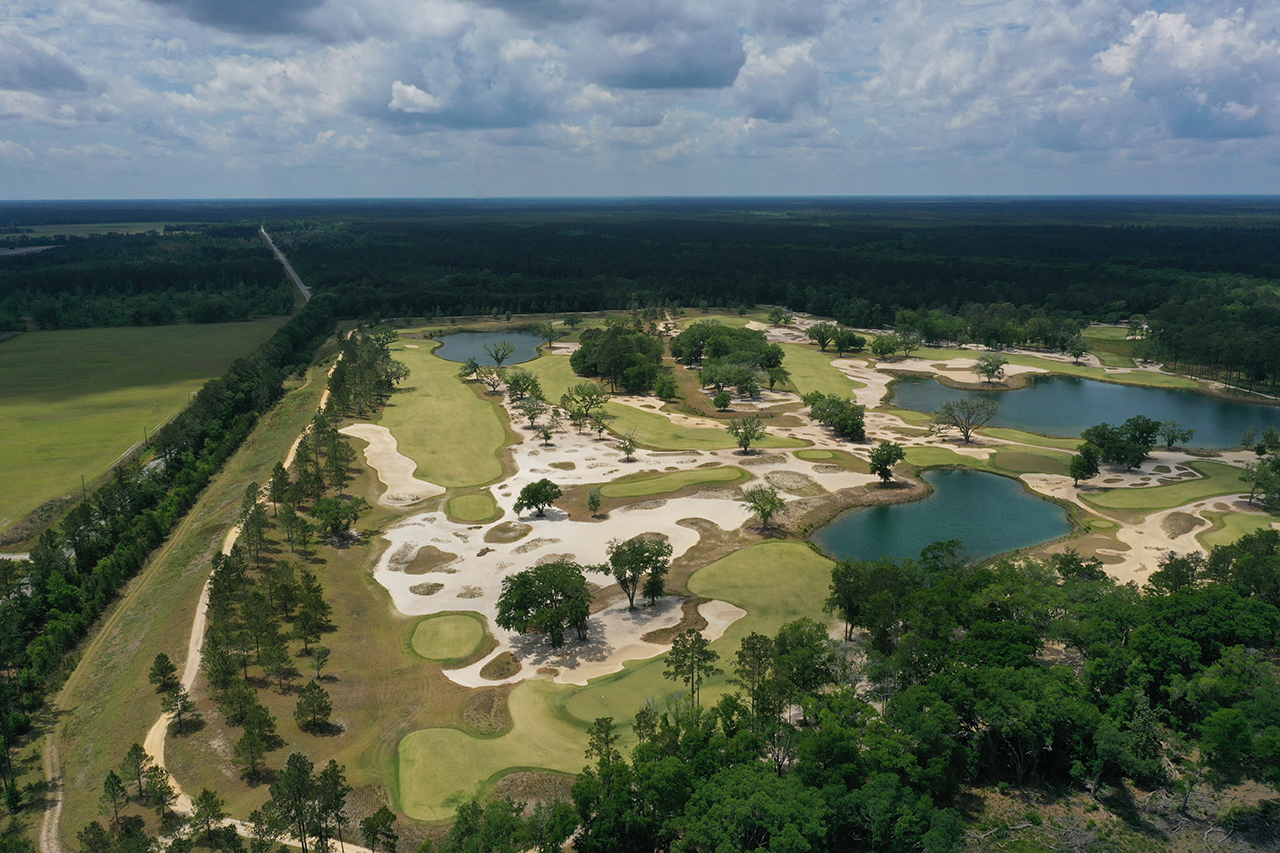RIDGELAND, S.C. – Your journey back in time begins at a nondescript gate that opens to a thin pebblestone pathway shadowed by ancient live oaks swathed with Spanish moss.
Winding through this inland property in South Carolina’s Lowcountry 30 minutes north of Savannah, Georgia, is a tranquil reminder of days gone by. The land, after all, was once home to a rice plantation dating back to the 18th century whose main house had to be rebuilt after being burned to the ground during the Civil War by Union troops marching across the South.
The 3,200-acre property is dotted with white buildings including guest cottages and a preserved old schoolhouse featuring a bell in the steeple that rings charmingly true. The centerpiece of the property, however, is a brand-new golf course that looks like it’s been there for decades but is a modern classic.

The Global Golf Initiative at Congaree offers a mix of educational, vocational and golf instruction. (Eamon Lynch, Golfweek)
The former plantation is now Congaree Golf Club, its name honoring an Indian tribe that once called the area home. The club will host on June 10-13 the Palmetto Championship at Congaree, which replaces the canceled RBC Canadian Open.
The players on the PGA Tour will be challenged by the Tom Fazio design. All others who will put a peg in the ground at Congaree over the years will be challenged, as well, but fairly. In its short existence, the course already has tied for No. 1 in South Carolina on Golfweek’s Best Private Courses list and has climbed to No. 30 on Golfweek’s Best Modern Courses list for all layouts opened in or after 1960 in the United States.
The exclusive private club was the creation of billionaires Dan Friedkin and Robert C. “Bob” McNair, whose philanthropic mission – to provide educational and vocational opportunities for economically challenged youth throughout the world who have a passion for golf – is the driving force of the club.
Instead of members, the club has ambassadors who support the charitable mission with dollars and time. Among the ambassadors is three-time PGA Tour winner and 2009 U.S. Open champion Lucas Glover.
“It’s different. It’s firm and fast. It’s fun,” Glover said of the course, which he’s played five times. “It’s 100-percent playable to all golfers. It’s designed that way. It’s a good test for a good player and a fair test for an average to high handicapper.
“I think the PGA Tour players will like it. It will be in good shape. The greens will be good. It’s a cool place.”
Fazio did some of his best work to create a stimulating, flowing expedition from the first tee through the 18th hole. The sandy soil he was charged to shape and mold provided the perfect base; from most every vantage on the course, one can see wide-open spaces and large stretches of sand dividing holes that are rimmed by hundreds of ancient live oaks.
The lakes and moderately rolling hills look like they have been here for centuries. While Congaree has a historic feel, the course opened in 2018 and can stretch out to 7,700 yards at a par of 71, playing firm and fast and demanding true execution from today’s technologically enhanced golf clubs.
The razor-edged bunkers are mindful of those found in the Australian Sandbelt. Although the course has little elevation – the highest point is 35 feet above the lowest point – many cavernous bunkers will leave players wondering about those measurements.
The tightly mown fairways not only allow putts from 50 yards off the greens, in some cases the conditions almost demand the ground game. Hitting the fairway doesn’t always allow you to feel safe; seven strategically placed oaks will have you wondering how to get to the greens from the short grass.
The putting surfaces run true and are deceptively difficult – just when you think you have to play the putt two balls out on the right, your caddie points to a mark two feet outside the cup.

The second hole at Congaree Golf Club in Ridgeland, South Carolina. (Eamon Lynch, Golfweek)
Every hole stands on its own, from the two drivable par 4s to the stout selection of par 3s, some of which have greens pitched toward water hazards. All three of the par 5s have teeth, especially the big-boy eighth that is basically broken into three parts – the tee shot heads toward a slanted fairway, the layup to another sectioned fairway and the third to a menacing green guarded by demanding, deep bunkers that are not kind.
There are gentle doglegs and then doglegs where you have to determine how much you want to bite off. This is especially true on the 17th.
Many of the greens have runoff areas; many have drop-off areas.
In short, Congaree is long on variety.
But one of the best features of the course – perhaps the best – can be found on the teeing areas. Actually, make that not found on the tee boxes. There are no tee markers at Congaree. Instead, there are discs on each of the extensive tee boxes that show the yardage from that point on the hole.
From there, you choose your tee marker. If you want to feed your ego, go back as far as you want. If you want to check your ego at the first tee, then play the yardage you can handle.
It’s a nice touch to a course that offers plenty of them.

